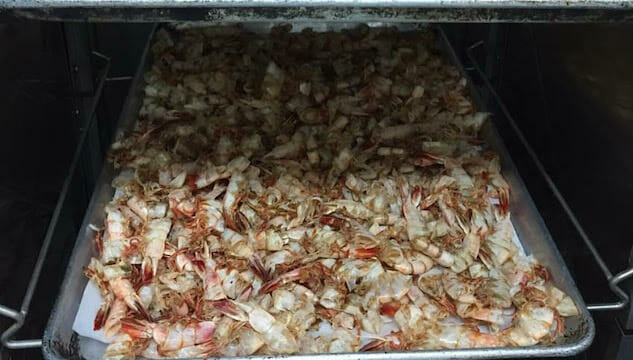Waste Warrior: Chef Clark Barlowe, Heirloom Restaurant
Photos by Clark Barlowe
For Clark Barlowe, executive chef of Heirloom Restaurant in Charlotte, N.C., and one of the newest members of the James Beard Smart Catch program, there is always something more that he and his team can consider when it comes to ethical sourcing, sustainability, and reducing waste. But he’ll admit that it was his sous chefs and prep cooks who pushed him into his newest “close the loop” practice that was so easy, he was surprised he hadn’t considered it before.
“One of our most popular dishes here is shrimp and grits. We use North Carolina brown and white shrimp, which are both super delicious, and we go through so much of them, we have all these shrimp shells left over. Of course, we make shrimp stock with some of them, but beyond that, there are just so many. I couldn’t bear to throw them away, so I was just storing them in the walk-in [freezer],” he explains. “My cooks came to me and said, ‘We’re running out of space in the freezer. We have to do something about these shrimp shells.’”
So taking a cue from dried shrimp products in Asian cooking, they decided to test drying them out and grinding to a powder. The results have added yet another layer of deliciousness to his kitchen arsenal. “I thought it would be crunchy, but it almost disappears on the tongue,” he explains. “It really grinds down fine and has a very similar consistency to Wondra Flour, so we began using it first to crust strawberry grouper before we seared it. Now we are using it not only to sear fish, but in vinaigrettes and in pasta. It adds a real shrimp flavor.”
Besides the fact that his kitchen routinely smells like a Lowcountry boil and has the kitchen staff going home fragranced like that too, Barlowe’s main concern is his diners with shellfish allergies. There is no getting around that shrimp is being processed in the kitchen, and with the fine consistency of the powder in use, he has to be extra vigilant for his customers with shellfish concerns.
 Photo by Clark Barlowe
Photo by Clark Barlowe